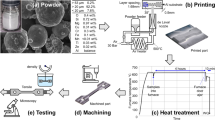Conclusions
The next steps in developing SSF will require sufficient funding to produce samples with the suggested refinements and evaluate these samples. The steps include developing a proprietary auxiliary process that renders the annealing step unnecessary and allows for the direct use of the near-net shape in the assprayed condition, investigating specially prepared strengthening phase powders that better match the mechanical impedance of aluminum for producting near-net-shape aluminum MMC, using heated air as an accelerating gas, and conducting additional mechanical tests of aluminum and aluminum MMC to determine material properties.
After this work is completed, a production-prototype SSF system must be manufactured. Finally, to complete the SSF commercialization process, either a production facility or agreements with contract producers will be required. Innovative Technology anticipates that the SSF technology will also be licensed for use in various manufacturing plants. While it is too early to estimate the cost of these tasks, they will be considerable. The feasibility of such an expense will be evaluated on the basis of preliminary technical results, the market opportunity that the technical results suggest, and market-penetration estimates.
Similar content being viewed by others
References
R.W. Evans, A.G. Leatham, and R.G. Brooks.Powder Metallurgy, 28 (1985), pp. 13–19.
A.G. Leatham et al., “Osprey Process-Production Flexibility in Materials Manufacture,”Metals & Materials, 5 (1989), pp. 140–143.
A.G. Leatham and A. Lawley, “Osprey Process Principles and Applications,”Int. J. of Powder Met., 29 (4) (1993), pp. 321–329.
P.S. Grant, “Spray Forming,”Prog. in Mat. Sci., 39 (1995), pp. 497–545.
E.A. Muehlberger,Proceedings 7th International Materials Spraying Conference (Cambridge, U.K.: Weld. Ins., 1973), pp. 245–254.
M. Smagorinski et al., “The Thermal Plasma Near-Net-Shape Spray Forming of Al Composites,”JOM, 48 (6) (1996), pp. 56–59.
M.L. Sharp,Behavior and Design of Aluminum Structures (New York: McGraw Hill, 1993), pp. 1–40.
H. Gabel and R.M. Tapphorn, “A Coating or Ablation Applicator with a Debris Recovery Attachment,” U.S. patent pending (serial number and date available upon request) (1995).
T.S. Chow et al., “Preliminary Evaluation of KEM for Fabrication,”Proceedings of the 12th General Meeting of JOWOG 31 (Livermore, CA: University of California, 1996).
R.M. Tapphorn and H. Gabel,Kinetic Energy Metallization Process Feasibility Study (Livermore, CA: University of California, 1996).
H. Gabel and R.M. Tapphorn, “Surface Modification by High-Speed Macroscopic Particle Collision,”Surface Modification Technologies IX, ed. T.S. Sudarshan, W. Reitz, and J.J. Stiglich (Warrendale, PA: TMS, 1995).
A. Lawley and D. Apelian, “Spray Forming of Metal Matrix Composites,”Powder Metallurgy, 37 (2), (1994), pp. 123–128.
Leeds Metal Spinning Co. Ltd., “Metal Spinning—An Alternative to Pressing Aluminum,”Metallurgia (1993), p. 378.
Additional information
Authors’ Note: In this article, a metal-matrix composite refers to any solid-state spray-forming material that comprises aluminum and any reinforcement or strengthening material.
Howard Gabel earned his M.Sc. in metallurgical engineering at the University of Illinois in 1974. He is currently president of Innovative Technology.
Ralph M. Tapphorn earned his Ph.D. in nuclear physics at Kansas State University in 1970. He is currently vice president of technology at Innovative Technology.
Rights and permissions
About this article
Cite this article
Gabel, H., Tapphorn, R. Solid-state spray forming of aluminum near-net shapes. JOM 49, 31–33 (1997). https://doi.org/10.1007/BF02914398
Issue Date:
DOI: https://doi.org/10.1007/BF02914398




